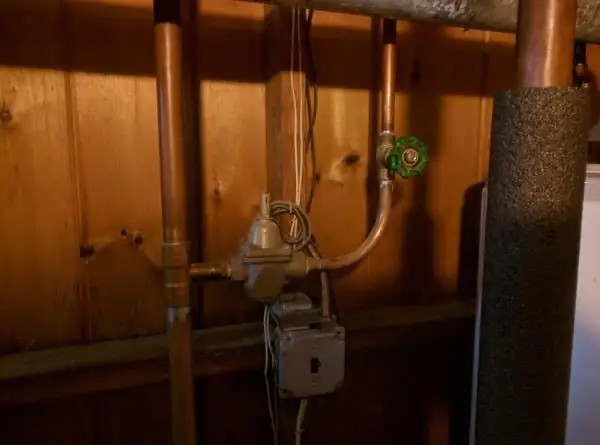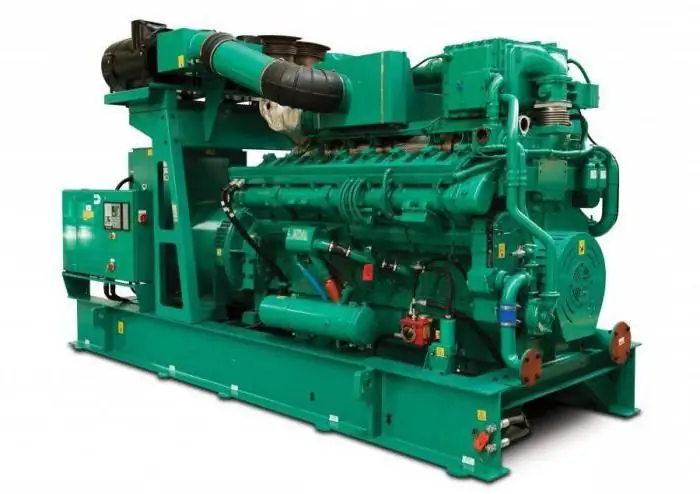2026 Author: Howard Calhoun | [email protected]. Last modified: 2025-01-24 13:10:31
Electric beam crane is a device mounted under the ceiling in the workshop building for transporting heavy loads. The beam crane itself is a fairly simple device. The principle of its operation and device will be described below. The above diagram is typical, but as a basis it is suitable for any such equipment. The electrical circuit for connecting crane beams depends on the method of supplying power to the mechanism. It can be wired or brushed.
Description of electrical circuit operation
Let's start work on our overhead crane by energizing the control circuit by turning on switch QS1. Usually QS1 is a key switch designed to prevent unskilled persons from working on the lifting mechanism. After turning on the control circuit, let's start working with the mechanism.
The diagram of the electric crane-beam is presented below.

Winch controls
When the SB1 button is pressed, the power passes through the current relay, the normally closed contact of the limit switch and the contact of the KM2 starter, turns on the electromagnet of the KM1 starter. The KM1 starter supplies power to the M1 motor, as a result of whichload lifting is activated. The current relay (RT) is necessary in order to prevent the engine from running for a long time in overload mode. The limit switch is necessary to stop rotation when the hook reaches the maximum upper position in order to avoid damage to the winch or its drive. The power supply of the KM1 starter is passed through the normally closed contact of the KM2 starter in order to prevent their simultaneous switching on. If this is not done, then if 2 starters are turned on simultaneously, a short circuit will occur in the power section of the circuit at the contact points, which will disable them. Such circuits for connecting starters to each other are called interlock circuits.
To lower the load, press the SB2 button. When it is pressed, the current passes through the normally closed contact of the limit switch of the lower limit position. And the normally closed contact of the KM1 starter, passing through the KM2 starter coil, starts the reverse rotation. A limit switch is required to avoid cable rewind.
Telfer control

To move the hoist of the electric crane-beam, relatively speaking, to the left, press the button SB3. The current will go through the normally closed contact of the limit switch located on the left extreme point of the hoist. When the hoist reaches the limit left position (collision with the rubber buffer), it will cut off the power supply to the KM3 starter in order to avoid overloading the electric motor and excessive wear of the wheels due to their scrolling in place. The power supply of the KM3 starter is also provided throughnormally closed contact of the KM4 starter with the same purpose of protecting the starters from simultaneous switching on.
To move the hoist, relatively speaking, to the right, press the button SB4. The supply voltage will go to the normally closed contact of the limit switch, and after passing through it, it will go to the normally closed contact of the KM3 starter, and only after that it will power the KM4 electromagnet coil, which will turn on the reverse rotation of the motor. If the right extreme point collides with the right buffer, the limit switch will cut off the power to the starter, as a result of which the rotation of the wheels will stop.
Electric Crane Bridge Control

To turn on the bridge forward, press the SB5 button. The starter is powered in the same way as in the previous functions to provide the same protections. The backward movement of the bridge works in the same way.
After finishing work with the mechanism, turn the key to the "OFF" position. and take it out of the castle. When you try to turn on any of the functions of the electric crane, the mechanism will remain stationary.
In conclusion, we can say that a beam crane is one of the simplest devices, but it greatly facilitates the work of an ordinary worker.
Recommended:
Electric motor with gearbox: features, device and principle of operation

Nowadays, it is difficult to find an industry that does not use geared motors. This unit is a kind of electromechanical independent unit in which the electric motor and gearbox work in pairs
Electric locomotive 2ES6: history of creation, description with photo, main characteristics, principle of operation, features of operation and repair

Today, communication between different cities, passenger transportation, delivery of goods is carried out in a variety of ways. One of these ways was the railroad. Electric locomotive 2ES6 is one of the types of transport that is currently actively used
Vent motors: the principle of operation. Do-it-yourself valve electric motor

Switchless motors have a lot of advantages. Models of this type are characterized by high efficiency. In order to find out the features of brushless motors, you should consider the diagram of their device
Low pressure heaters: definition, principle of operation, technical characteristics, classification, design, operation features, application in industry

Low pressure heaters (LPH) are currently used quite actively. There are two main types that are produced by different assembly plants. Naturally, they also differ in their performance characteristics
Gas piston power plant: the principle of operation. Operation and maintenance of gas piston power plants

Gas piston power plant is used as a main or backup source of energy. The device requires access to any type of combustible gas to operate. Many GPES models can additionally generate heat for heating and cold for ventilation systems, warehouses, industrial facilities

